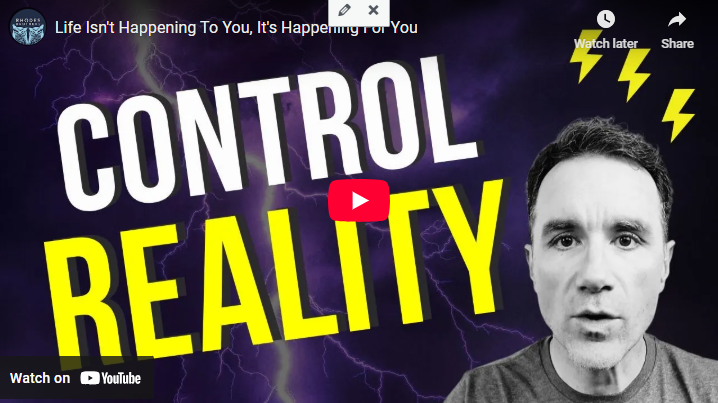For More Free Videos, Subscribe to the Rhodes Brothers YouTube Channel.
“Reprogramming your mind isn’t about changing who you are—it’s about becoming who you’re meant to be.” – John S. Rhodes

Our minds are incredibly powerful, yet most of us operate on autopilot, held back by limiting beliefs, outdated thought patterns, and a lack of intentional focus. The good news? You can reprogram your mind to unlock its full potential and achieve the life you truly desire. Whether you want to develop better habits, achieve financial freedom, or simply find inner peace, reprogramming your mind is the key to making it happen.
This guide will take you through eight proven steps to rewire your brain, based on insights shared by John S. Rhodes of Rhodes Brothers. From mindfulness and meditation to visualization and connecting with higher consciousness, these techniques are designed to help you break free from mental barriers and align your thoughts with your goals.
TL;DR
- Practice mindfulness to stay rooted in the present moment and reduce mental clutter.
- Engage in deep meditation to expand your consciousness and gain clarity.
- Ask yourself powerful questions through self-inquiry to challenge limiting beliefs.
- Leverage conscious breathing to calm your mind and reset your mental state.
- Use visualization techniques to manifest your goals and strengthen your focus.
- Engage in physical practices like yoga or Tai Chi to align your body and mind.
- Explore non-dual awareness to understand the interconnectedness of all things.
- Learn from mentors and teachers to accelerate your growth and gain new perspectives.
Let’s dive into each step with actionable insights and strategies.
Mindfulness: The Power of Present Moment Awareness
Mindfulness is the foundation of mental reprogramming. It’s about anchoring yourself in the present moment, reducing mental noise, and cultivating awareness of your thoughts. When you become mindful, you gain the ability to observe your thought patterns without judgment, creating space for intentional shifts in your mindset.
Tools for Practicing Mindfulness
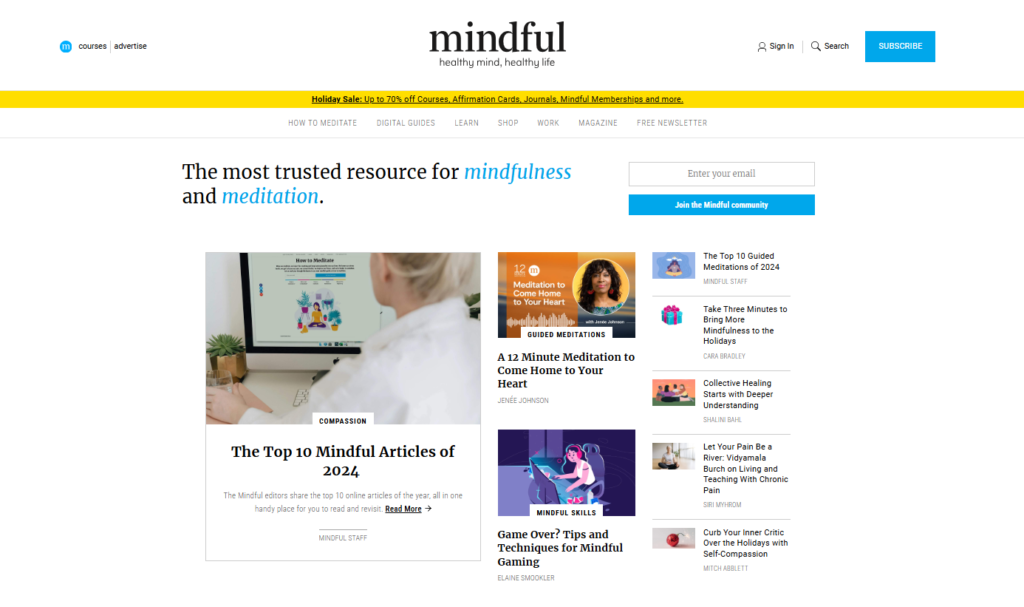
- Headspace – A beginner-friendly app offering guided mindfulness meditations.
- Mindful.org – A resource filled with articles, tips, and exercises on mindfulness.
- Forest App – Helps you stay focused on the present by gamifying focus time.
Practical Steps to Incorporate Mindfulness
- Start with Your Breath: Take one deep breath and focus entirely on the sensation of air entering and leaving your body. This simple act can reset your mind in seconds.
- Set a Timer: Dedicate 5–10 minutes daily to sitting quietly and observing your thoughts. Use a timer app like Insight Timer to guide your practice.
- Mindful Journaling: Reflect on your day by writing down moments when you felt fully present. This practice reinforces mindfulness and helps you identify patterns in your mindset.
Mindfulness isn’t just about being calm—it’s about gaining clarity.
Deep Meditation: Expanding Your Consciousness
Meditation is a powerful tool for reprogramming your mind. It allows you to access deeper levels of awareness, quiet mental chatter, and create an environment where new, positive thought patterns can take root.
Tools for Meditation
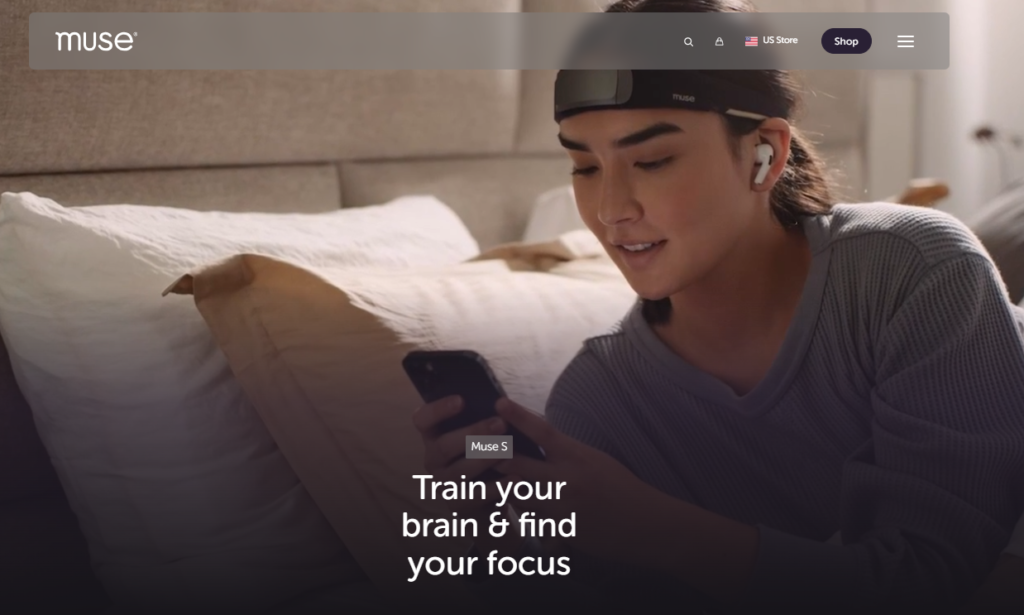
- Calm App – Offers guided meditations, breathing exercises, and soothing soundscapes.
- Muse Headband – A wearable device that gives real-time feedback on your meditation practice.
- Meditative Mind YouTube Channel – Features music and guided meditations for deeper focus.
Steps for Effective Meditation
- Find Your Space: Choose a quiet, comfortable spot where you won’t be disturbed.
- Use a Guided Meditation: If you’re new to meditation, apps like Calm or Insight Timer can provide step-by-step guidance.
- Experiment with Techniques: Try different methods, such as focusing on your breath, repeating a mantra, or practicing loving-kindness meditation.
John S. Rhodes explains, “Meditation aligns your body and mind, calming the chaos to create clarity.” By meditating consistently, you’ll not only feel more relaxed but also gain a heightened sense of focus and purpose.
Self-Inquiry: Deconstructing the Ego
Self-inquiry is the process of asking deep, reflective questions to uncover the beliefs, fears, and patterns that shape your mindset. By challenging your ego and digging into your core values, you can identify what’s holding you back and reframe your perspective.
Tools for Self-Inquiry
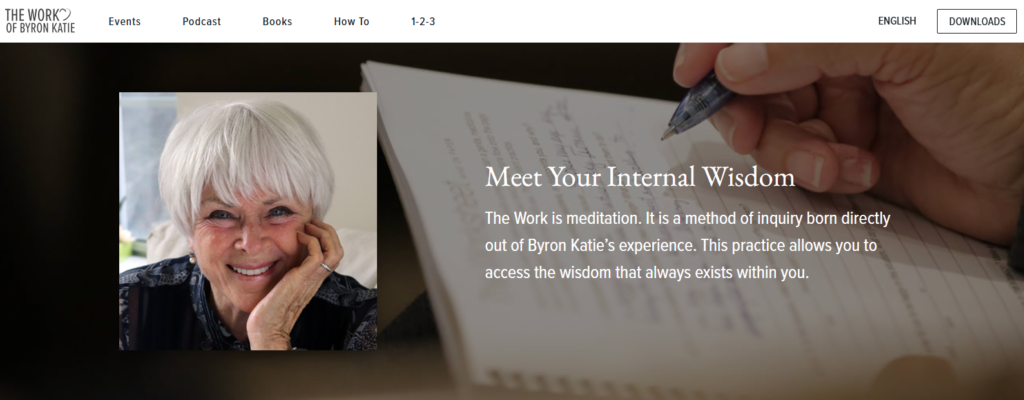
- The Work by Byron Katie – A structured approach to questioning limiting beliefs.
- Notion – A digital tool for organizing your thoughts and journaling your self-inquiry exercises.
- Self-Reflection Prompts PDF – Free downloadable prompts to guide your self-discovery process.
Questions to Ask Yourself
- “Who am I outside of my roles and labels?”
- “What beliefs are limiting me, and where did they come from?”
- “What am I afraid of, and how can I face it?”
Spend time journaling your answers or meditating on these questions. As you gain clarity, you’ll notice a shift in how you view yourself and the world around you.
Conscious Breathing: Resetting Your Mental State
Conscious breathing is a quick and effective way to calm your mind, reduce stress, and reset your mental state. When you focus on your breath, you activate your parasympathetic nervous system, which helps you relax and refocus.
Tools for Conscious Breathing
- Breathwrk App – Offers guided breathing exercises for relaxation, focus, and energy.
- Breathe+ Coherence App – Tracks your breathing patterns and helps improve them.
- Pranayama Timer – Guides you through yogic breathing techniques like Nadi Shodhana (alternate nostril breathing).
Techniques to Try
- Box Breathing: Inhale for 4 seconds, hold for 4 seconds, exhale for 4 seconds, and hold again for 4 seconds.
- 4-7-8 Breathing: Inhale for 4 seconds, hold for 7 seconds, and exhale for 8 seconds. This technique is particularly effective for reducing anxiety.
- Diaphragmatic Breathing: Focus on breathing deeply into your belly rather than your chest, promoting relaxation.
Visualization and Manifestation Techniques
Visualization is a powerful way to reprogram your subconscious mind. By vividly imagining your goals as if they’ve already been achieved, you train your brain to believe in your success, which influences your actions and decisions.
Tools for Visualization
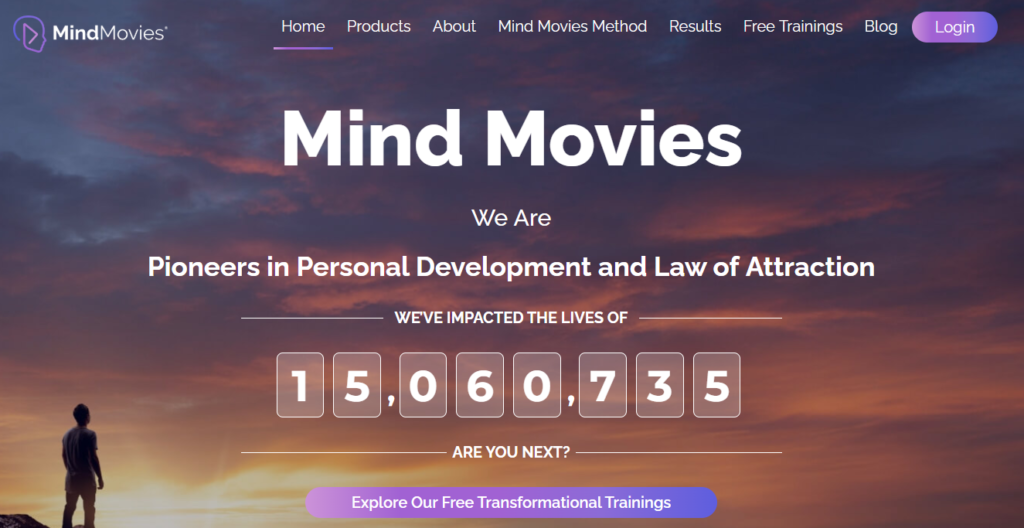
- Mind Movies – A software tool for creating personalized visualization videos.
- Vision Board Apps: Apps like Canva or Pinterest can help you create a virtual vision board.
- Daily Affirmation Cards – Use physical or digital affirmation cards to reinforce your visualization practice.
How to Visualize Effectively:
- Create a Scene: Imagine yourself achieving your goal in vivid detail. What does it look, feel, and sound like?
- Use Multi-Sensory Imagery: Engage all your senses in the visualization process to make it more powerful.
- Practice Daily: Dedicate 5–10 minutes each day to picturing your goals.
Napoleon Hill famously said, “Whatever the mind can conceive and believe, it can achieve.” Visualization turns this principle into a daily habit that rewires your brain for success.
Physical Practices: Aligning Body and Mind
Your mind and body are deeply interconnected, and physical practices like yoga or Tai Chi can help you align both. These activities not only promote mental clarity but also teach you to navigate the ups and downs of life with grace.
Tools for Physical Practices:
- Glo Yoga App – Offers yoga classes for all levels, focusing on mindfulness and alignment.
- Tai Chi for Beginners DVD – A step-by-step guide to mastering the basics of Tai Chi.
- Fitbit or Apple Watch – Track your physical activity and monitor your progress.
Practices to Try:
- Yoga: Focus on poses that promote relaxation and mindfulness, such as Child’s Pose or Tree Pose.
- Tai Chi: Engage in slow, deliberate movements to cultivate balance and focus.
- Walking Meditation: Take a slow, mindful walk, paying attention to each step and breath.
Physical practices help you embody the lessons you’re learning mentally, creating a holistic approach to reprogramming your mind.
Non-Dual Awareness: Understanding Oneness
Non-dual awareness is a more advanced concept that involves recognizing the interconnectedness of all things. It’s about moving beyond the illusion of separateness and embracing the idea that we are all part of a larger whole.
Tools for Cultivating Non-Dual Awareness:
- Sam Harris’s Waking Up App – Focuses specifically on advanced mindfulness and non-duality.
- Meditations from Rupert Spira – Offers guided meditations on non-dual awareness.
- The Book of Secrets by Osho – Explores the philosophy and practice of oneness.
Practices to Explore:
- Contemplative Meditation: Reflect on the idea that everything is interconnected and observe how this perspective shifts your thinking.
- Gratitude Journaling: Write down the people, events, and circumstances that have contributed to your life, reinforcing your sense of connection.
- Nature Immersion: Spend time in nature, observing the interconnectedness of the ecosystem around you.
This perspective can profoundly change how you approach challenges, relationships, and personal growth.
Learning from Mentors and Teachers
One of the best ways to accelerate your growth is by learning from those who have already mastered the art of reprogramming their minds. Mentors, teachers, and communities can provide guidance, support, and inspiration to keep you on track.
Tools for Finding Mentors:
- MasterClass – Learn from world-renowned experts across various fields.
- Meetup – Join local groups focused on mindfulness, meditation, or personal development.
- Rhodes Brothers YouTube Channel – A valuable resource for insights on consciousness and growth.
How to Work with Mentors:
- Ask for Guidance: Reach out to experts in your field of interest for advice or coaching.
- Join a Community: Engage in workshops, retreats, or online groups that align with your goals.
- Invest in Learning: Don’t hesitate to pay for courses or one-on-one coaching if it aligns with your growth.
As John S. Rhodes emphasizes, “Verify the source of your learning. Surround yourself with those who elevate your consciousness.”
By using these tools and strategies, you can take charge of your mental reprogramming journey, setting yourself up for long-term growth and success.
Actionable Steps to Reprogram Your Mind
Reprogramming your mind can be tailored to fit your unique circumstances, goals, and lifestyle, making it accessible to anyone—whether you’re a beginner starting fresh, a busy millennial balancing multiple priorities, a parent trying to model positivity, or an entrepreneur striving for success. Here’s how you can break it down into practical strategies that work for different demographics.
For beginners, the key is to start small and focus on building foundational habits. Begin by incorporating mindfulness into your daily routine. Dedicate 5 minutes a day to mindfulness meditation using beginner-friendly tools like Headspace or Insight Timer. Focus on simple actions like observing your breath or repeating a calming mantra such as, “I am calm and capable.” Next, challenge your limiting beliefs by journaling. Write down one belief that’s holding you back (e.g., “I’m not good at learning new skills”) and counter it with evidence that disproves it. Visualization is another powerful tool. Spend 3–5 minutes every day imagining yourself achieving a goal, such as excelling in a new skill or overcoming a challenge. Apps like Pinterest or tools like vision boards can help bring your goals to life. Finally, practice intentional breathing exercises, such as box breathing (inhale for 4 seconds, hold for 4 seconds, exhale for 4 seconds, and hold for 4 seconds), to calm your mind during stressful moments. Track your progress using apps like Daylio, which can help you reflect on small wins and stay motivated.
For millennials, who often juggle career, personal growth, and social connections, the focus should be on integrating mind reprogramming techniques into a busy lifestyle. Start by setting daily intentions to guide your mindset, such as “Today, I will focus on practicing patience.” Use tools like Notion or Todoist to organize and track these intentions. Building a morning routine is equally essential—consider spending 10 minutes each morning on mindfulness meditation, journaling, or reading inspirational books like Atomic Habits by James Clear. Visualization can be particularly effective for career-focused millennials. Imagine yourself succeeding in a specific goal, such as giving a great presentation or earning a promotion, and reinforce this with affirmations like, “I am capable of achieving my goals.” Gratitude is another simple but transformative practice—write down three things you’re grateful for each day using apps like Grateful: A Gratitude Journal. Lastly, limit digital distractions with tools like StayFocusd or Freedom, replacing mindless screen time with rejuvenating activities like yoga or walking meditations.
For those nearing retirement, reprogramming your mind can help you transition into this new phase with clarity and purpose. Start by reflecting on your core values and identifying what brings you joy. Journaling with tools like Penzu can help organize your thoughts and guide your exploration. Incorporate non-dual awareness into your practice by contemplating how you’re interconnected with the world and others. Apps like Waking Up by Sam Harris offer guided meditations that explore this advanced concept. Explore new passions or hobbies that engage both your mind and body, such as painting, gardening, or Tai Chi. Platforms like Udemy or local workshops can make learning fun and accessible. Visualization can also play a meaningful role—imagine the legacy you want to leave behind and the impact you hope to have on your loved ones. Use tools like Canva to create a digital scrapbook of your reflections. Gratitude practices and nature immersion can further foster a sense of peace and fulfillment in this stage of life.
For advanced practitioners, who may already have a solid foundation in mindfulness and self-development, it’s about deepening your practice and exploring advanced strategies. Consider experimenting with guided psychedelic experiences (in safe, legal, and supervised environments) to access higher levels of consciousness. Work with a trained guide or therapist to ensure these experiences are meaningful and safe. Dive deeper into non-dual awareness by reflecting on the idea that everything is interconnected. Rupert Spira’s meditations or books like The Untethered Soul by Michael A. Singer can provide profound insights. Silent retreats, such as those offered by Spirit Rock or Vipassana Meditation Centers, are another way to deepen your practice. Mentoring others is an advanced way to reinforce your own growth while sharing your knowledge. Platforms like Meetup or LinkedIn Learning can connect you with people eager to learn from your experiences. Finally, track your progress with biofeedback tools like the Muse Headband, which monitors your brain activity during meditation and helps refine your techniques.
For parents, reprogramming your mind not only benefits you but also sets a positive example for your children. Practice mindfulness together as a family, dedicating 5 minutes a day to breathing exercises or guided meditations using child-friendly apps like Smiling Mind. Teach your kids the power of gratitude by creating a family gratitude jar, where everyone writes down one thing they’re thankful for each day. Review these notes weekly to reinforce positivity. Model positive self-talk by reframing negative thoughts into empowering ones. For example, say, “I’m learning how to solve this problem” instead of “I can’t do this.” Encourage visualization by helping your children imagine achieving their goals, whether it’s succeeding in school or excelling in their favorite sport. Use creative methods like storytelling or drawing to make it fun and engaging. Incorporate physical practices like yoga into your family routine, using YouTube channels like Cosmic Kids Yoga to make it enjoyable for everyone.
For entrepreneurs and business professionals, reprogramming your mind can enhance focus, creativity, and resilience—key traits for career success. Start by setting clear, measurable goals. Use organization tools like Trello or Asana to break these goals into actionable steps. Visualization can be particularly impactful—spend time each day picturing yourself achieving milestones, such as launching a successful product or securing a major client. Reinforce this with affirmations like, “I have the skills and knowledge to succeed.” During high-pressure situations, practice stress management techniques like conscious breathing to stay calm and focused. Adopt a growth mindset by reframing failures as opportunities to learn and grow. Journaling lessons learned from challenges can help track your progress. Finally, seek mentorship from seasoned entrepreneurs. Platforms like Score or LinkedIn Learning connect you with experienced mentors who can guide your journey.
Reprogramming your mind is a flexible and transformative process that can be adapted to suit any demographic or experience level. Whether you’re just starting out, balancing a busy lifestyle, or looking for advanced techniques, these actionable steps provide a clear roadmap to unlock your mental potential and achieve your goals.
Common Mistakes to Avoid
Reprogramming your mind is undoubtedly transformative, but like any meaningful process, it comes with its challenges. Many people unknowingly fall into certain traps that hinder their progress or leave them feeling frustrated and stuck. By understanding these common mistakes, you can proactively avoid them and stay on track toward achieving your goals.
One of the most frequent mistakes people make is rushing the process. Reprogramming your mind is not something that happens overnight—it requires time, effort, and patience. Many individuals start this journey with high expectations, only to feel disheartened when they don’t see immediate results. It’s important to remember that your current mindset and habits were formed over years, or even decades, so rewiring them takes time. Be patient with yourself. Celebrate small wins along the way, and trust that consistent effort will lead to lasting change.
Another common pitfall is neglecting consistency. Sporadic effort, such as meditating one week and skipping the next, or journaling only when you feel motivated, won’t produce the results you’re looking for. Reprogramming your mind requires daily commitment, even if you only dedicate a few minutes to the process each day. Consistency builds momentum, and over time, these small, repeated actions compound into transformative results. Tools like habit-tracking apps such as Habitica or Streaks can help you stay accountable and make consistency easier to maintain.
A particularly harmful trap is chasing perfection. Many people approach mind reprogramming with the unrealistic goal of achieving a flawless mindset or perfect habits. However, perfection is an illusion—it’s progress, not perfection, that creates change. When you aim for perfection, you set yourself up for disappointment because setbacks and mistakes are inevitable. Instead of beating yourself up when you miss a day of meditation or have a negative thought, treat these moments as opportunities to learn and grow. Reframing your perspective in this way can prevent discouragement and help you stay focused on your long-term goals.
One overlooked yet critical mistake is ignoring physical health. Your mind and body are deeply interconnected, and neglecting your physical well-being can undermine your mental efforts. If you’re not eating well, getting enough sleep, or exercising regularly, it becomes much harder to maintain focus, clarity, and emotional balance. Simple changes, like staying hydrated throughout the day, incorporating nutrient-rich foods into your diet, or doing 20 minutes of light exercise such as yoga or walking, can significantly boost your mental resilience. Keep in mind that caring for your physical health is not just about looking good—it’s a vital component of nurturing your mind.
Lastly, many people fall into the trap of expecting immediate results. Reprogramming your mind is a journey, not a quick fix or a one-time solution. When you approach it with the expectation that you’ll see dramatic changes right away, you’re more likely to feel frustrated and give up. Real transformation happens gradually, often in subtle ways. You might notice that over time, you react differently to stress, feel more confident in your decisions, or become more mindful in your daily interactions. These small changes add up, but they require patience and perseverance. A helpful tip is to reflect on your progress regularly, perhaps through journaling or monthly check-ins, so you can clearly see how far you’ve come—even if the changes feel incremental.
By avoiding these common mistakes, you set yourself up for long-term success in reprogramming your mind. Remember, this is a process of growth and self-discovery. Be kind to yourself, stay consistent, and focus on progress over perfection. Your efforts, no matter how small they may seem, are building a stronger, more empowered version of yourself.
Frequently Asked Questions
How long does it take to reprogram your mind?
It varies, but most people see noticeable changes within 30–90 days of consistent practice.
Do I need a mentor to succeed?
While not mandatory, a mentor can accelerate your growth and provide valuable guidance.
Can I reprogram my mind without meditation?
Yes, but meditation is one of the most effective tools for mental reprogramming.
What’s the best breathing technique for beginners?
Box breathing is simple and effective for beginners.
How does visualization help?
Visualization trains your brain to focus on your goals, making them feel attainable.
Are psychedelics necessary for reprogramming?
No, but some individuals explore them as a tool for advanced consciousness work. Proceed with caution.
What are the benefits of non-dual awareness?
It fosters a sense of oneness, reducing feelings of isolation and increasing compassion.
Can physical practices replace meditation?
Physical practices complement meditation but don’t replace it entirely.
How do I avoid negative influences?
Surround yourself with positive, growth-oriented people and limit exposure to negativity.
Is reprogramming your mind permanent?
With consistent practice, the changes can become deeply ingrained and long-lasting.
Take Control of Your Mind, Take Control of Your Life
Reprogramming your mind is not just a self-improvement exercise—it’s a transformative process that empowers you to live the life you’ve always envisioned. By mastering mindfulness, meditation, self-inquiry, and the other steps outlined in this guide, you can break free from negative patterns, achieve clarity, and align your thoughts with your deepest goals.
As John S. Rhodes reminds us, “Reprogramming your mind isn’t about changing who you are—it’s about becoming who you’re meant to be.” The journey begins with small, consistent actions. Whether you start with a single breath, a moment of gratitude, or a guided visualization, what matters most is that you take the first step.
If this guide resonated with you, don’t stop here. Share it with others who can benefit, and take advantage of the resources below to deepen your practice and expand your understanding.
Now that you have the tools and strategies to reprogram your mind, it’s time to take action. Start small, stay consistent, and trust the process.
Take a moment today to reflect on what you’ve learned. Which step will you implement first? Is it mindfulness? Meditation? Visualization? Whatever it is, commit to it fully.
Finally, don’t forget to subscribe to the Rhodes Brothers YouTube Channel for more actionable advice, inspiring content, and expert insights. Together, we can grow, transform, and create a world of greater consciousness and connection.
Let’s move forward, one step at a time.
Resource List
Here’s a curated list of tools, books, apps, and services to support your mind reprogramming journey:
Books
- The Power of Now by Eckhart Tolle – A classic guide to mindfulness and present-moment awareness.
- Breaking the Habit of Being Yourself by Dr. Joe Dispenza – A practical manual for rewiring your brain.
- Man’s Search for Meaning by Viktor E. Frankl – A powerful exploration of purpose and mental resilience.
Courses
- Mindvalley’s Silva Ultramind System – A course on meditation and mind mastery.
- Headspace Meditation App – Offers guided meditation sessions for beginners and advanced practitioners.
- Yoga with Adriene (YouTube) – Free yoga sessions that blend mindfulness with physical practice.
Tools & Apps
- Calm – For guided meditations, breathing exercises, and sleep stories.
- Insight Timer – A free app with thousands of meditation tracks and talks.
- Notion – Organize your self-improvement journey with this versatile productivity tool.
Podcasts
- The Tim Ferriss Show – Features interviews with world-class performers who share insights on mindfulness and success.
- On Being Podcast – A thoughtful exploration of human spirituality and consciousness.
- The Daily Meditation Podcast – Short, actionable episodes to keep you consistent in your meditation practice.
Retreats and Communities
- Rhodes Brothers YouTube Channel – A treasure trove of insights on higher consciousness and personal mastery.
- Spirit Rock Meditation Center – Offers retreats and workshops for mindfulness and meditation.
- Gaia.com – An online platform with videos, courses, and documentaries on consciousness and personal growth.


